Newsletter: Love the national parks? Get ready for them to heat up
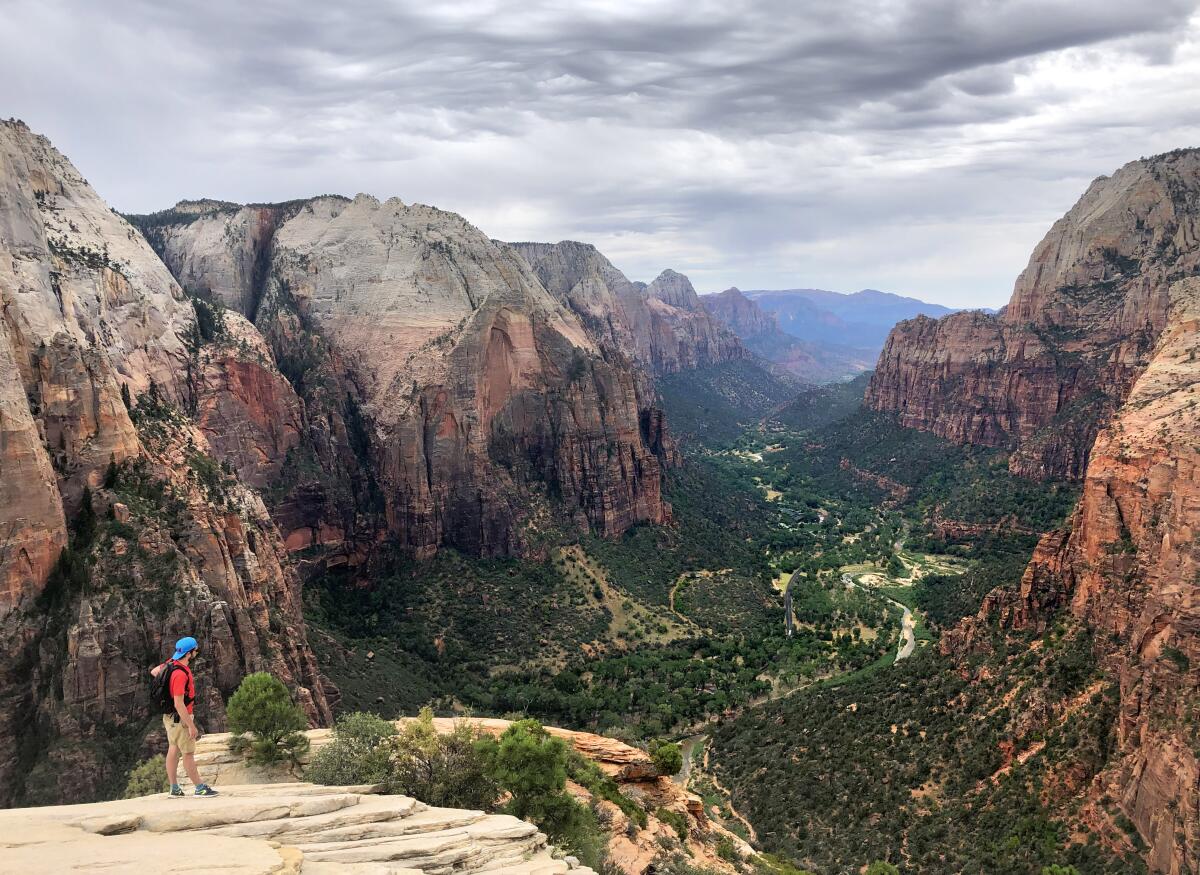
This is the Sept. 23, 2021, edition of Boiling Point, a weekly newsletter about climate change and the environment in California and the American West. Sign up here to get it in your inbox.
Glaciers vanishing in Glacier National Park. Sand dunes blowing away at White Sands in New Mexico. Wildfire smoke obscuring the Tetons, flames licking at the sequoias near their namesake park, Joshua trees dying out in their namesake park.
These are just some of the ways that global heating is reshaping America’s public lands.
If you care about endangered species, it’s not great. If you think we should preserve ecosystems that support human health, it’s no better. And if you enjoy hiking in wildlands during the summer — like I do — you might want to prepare yourself.
A new study from Utah State University’s Institute of Outdoor Recreation and Tourism, published this month, tries to quantify how our enjoyment of public lands will shift as temperatures rise. The researchers estimate that outdoor recreation in the summer could drop 18% by 2050, with public lands visitation rising by 12% in the winter. The summer drop-off could be greatest in the already hot and muggy South Atlantic-Gulf region, with California and other Western states seeing substantial declines, too.
“I think climate change is going to impact pretty much everything we do in our daily lives moving forward,” said lead author Emily Wilkins, who conducted the research as a postdoc at Utah State.

The study caught my attention for several reasons.
First off, I was fascinated by how Wilkins and her colleagues measured public lands visitation, and used those measurements to make projections going forward. Apparently the National Park Service is the only federal lands agency that collects visitor data by month or season, so the researchers turned to social media. They downloaded millions of geotagged photos from the image-hosting website Flickr, spanning 2006-2019 and taken on public lands managed by dozens of federal and state agencies.
Then they calculated average season-by-season maximum temperatures for the areas where those photos were taken; ran models to estimate how heat affected visitation within different parts of the country (accounting for various other factors); and finally used existing projections of rising temperatures to estimate how visitation patterns will change as the climate crisis worsens.
I had several questions. For one, why use Flickr for geotagged photos, rather than far more popular Instagram?
It turns out Flickr, unlike Instagram, makes its data available to the public for free. And although Flickr may not be the cat’s meow in 2021, Wilkins tells me it was plenty popular for much of the last 15 years, giving her and her colleagues sufficient data.
I also wondered about all the second-order climate consequences that might affect how and when I visit public lands, beyond just extreme heat — stuff like wildfire smoke, evaporating reservoirs and worsening storms.
Wilkins agreed that researchers have many more questions to address. She pointed to hunting and fishing as popular pastimes that could be disrupted as animals seek out new habitats better suited to their needs and as earlier-melting mountain snowpack changes the timing of peak fishing season. The timing of popular wildflower blooms could also change.
“It’s easier to study temperature and precipitation and big broad climate patterns across the U.S. But it’s harder to understand how indirect factors like changing species distribution are going to impact where people go, how they experience the outdoors,” Wilkins said. “There’s a big question of how these little, more indirect effects of climate change are going to add up.”
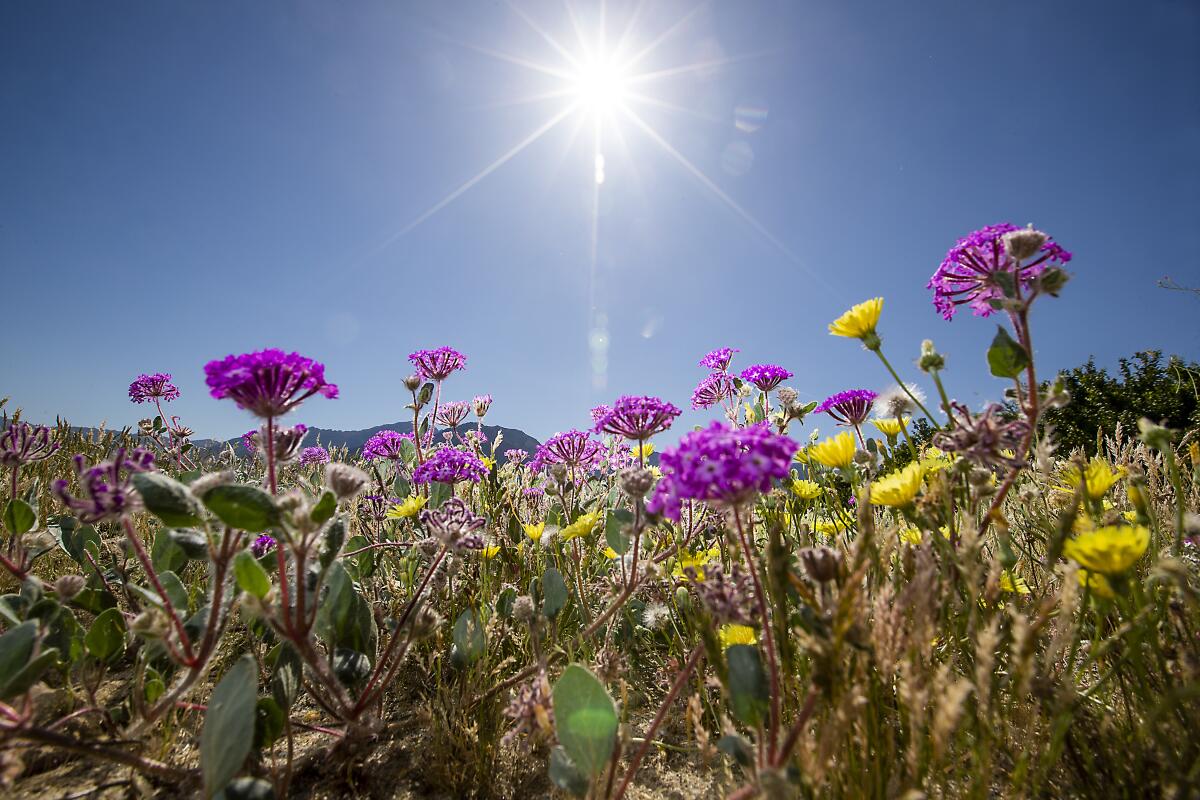
The study identified the Upper Colorado River Basin as the only region projected to see fewer winter visitors as the planet warms, which Wilkins said is likely because skiing in the Rocky Mountains is one of its main draws.
For hikers or trail runners who don’t depend on snow or the presence of certain animals to have a good time, rising temperatures “will impact them a little bit less,” Wilkins said. “You don’t have to plan around when the fish are going to be in the stream.”
The bit about hiking is comforting for me personally, since that’s the main way I enjoy public lands. But for the people charged with managing those lands, there’s a lot more to worry about — and that’s where the new research could offer guidance.
If visitation falls in summer but grows in winter (and potentially spring as well), agencies such as the National Park Service and the Bureau of Land Management may need to keep visitors centers, bathrooms and campgrounds open throughout the year, rather than just seasonally, or even hire more staffers in the winter. That will almost certainly require additional funding.
Gateway towns just outside national parks and monuments — such as Moab, Utah, or Estes Park, Colo. — may also have to adjust. Restaurants, gear merchants and other businesses catering to tourists might need to stay open more of the year.
Still, even if fewer people camp in Great Basin National Park or Bears Ears National Monument over the summer than might have otherwise, that doesn’t mean summer visitor counts will necessarily drop. As I noted two weeks ago, national parks and other public lands are more popular than ever. Wilkins wouldn’t be surprised if overall summer visitation continues to rise.
And that’s where there might be a silver lining in the new study. The most popular parks are already dealing with severe overcrowding, a problem that is typically worse during summer season. Packed crowds can diminish the experience of quiet and solitude that many people seek out in nature and make life unpleasant even in the most tourism-friendly gateway towns.
Shifting some of those crowds to winter and spring could be a breath of fresh air for park managers and nearby residents.
“Certain places might want more visitation, and certain places might be overcrowded and not want more visitation,” Wilkins said.
Mostly in jest, I asked Wilkins if hotter summers might actually increase visitation to Death Valley National Park. Not many people brave the intense heat to begin with, and I remembered how last year’s 130-degree temperatures sent tourists scrambling to take photos with the giant thermometer at Furnace Creek. Maybe additional heat records would be a boon for the park?
Wilkins, understandably, didn’t have much to say about that. She did, however, suggest public lands managers will need to do more to keep summer visitors informed about dealing with extreme heat: how much water to carry, how to stay safe. Just last month, two hikers died at Death Valley within a few days of each other.
And lest we forget, the future isn’t set in stone. Some amount of climate change is already baked in, but the more we can reduce emissions, the less global temperatures will rise. Ultimately, the fate of our public lands is in our hands.
And now, here’s what’s happening around the West:
TOP STORIES
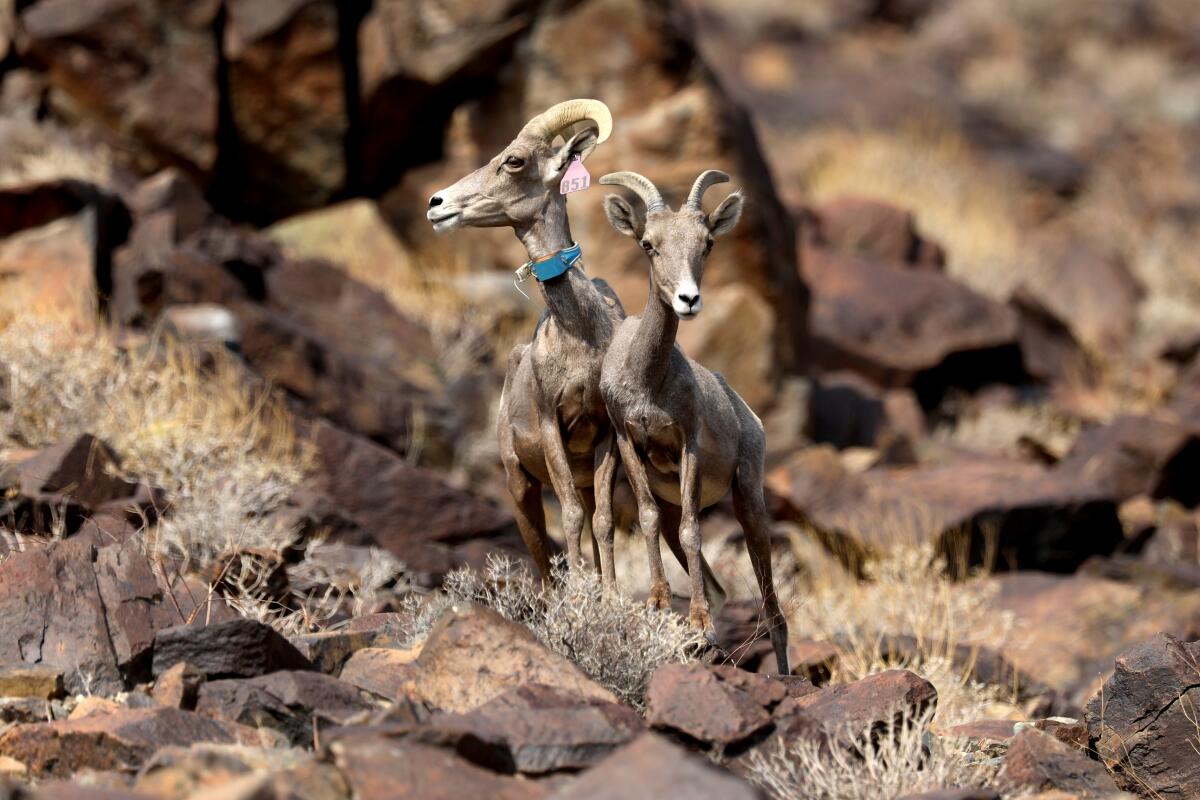
Southern California hardly cut its water use after Gov. Gavin Newsom called for a voluntary 15% reduction. In Los Angeles and San Diego, water use actually ticked up slightly in July, my colleague Ian James reports. That was a big difference from much of Northern California, where consumption dropped substantially. The same days those numbers dropped, the National Oceanic and Atmospheric Administration reported that the Southwest just saw its lowest 20-month rainfall total on record, Ian writes.
An electric rail line between L.A. and Las Vegas could reduce car traffic and slash climate pollution. But it could also block endangered bighorn sheep from crossing the 15 freeway — unless the developer pays for wildlife crossings, The Times’ Louis Sahagún reports. At least for now, developer Brightline West says the crossings desired by conservationists aren’t part of its plan.
Firefighters have managed to save some of the world’s largest and most beloved trees from fire, at least for now. With one exception — the so-called Bench Tree, which was torched — sequoias including General Sherman and groves such as the Giant Forest are safe, thanks in part to a history of prescribed burns meant to improve forest health, dedicated attention from fire crews and desperate tactics such as wrapping the base of some trees in protective foil. California’s giant sequoias evolved to thrive with fire, but the hotter, harder-to-control blazes of the climate era may be too much, Hayley Smith and Lila Seidman report.
THE WEST ON FIRE
The new chief of the U.S. Forest Service, Randy Moore, says he’s never seen fire conditions like this in his four decades at the agency. But Moore is holding out hope that the crisis will serve as a “call to action” for Congress to fund more fire prevention, he told my colleague Anna M. Phillips in a wide-ranging Q&A. Moore’s got a lot of problems to tackle, not the least of which is that trees are falling on power lines more often as drought makes them more susceptible to death by insect, per this story by NPR’s Julia Simon. And that’s not to let utility companies off the hook for failing to keep their power lines safe. Just a few days ago, victims of the Dixie fire sued Pacific Gas & Electric amid suspicions that its equipment sparked the blaze, Lila Seidman reports.
The fires threatening the giant sequoias are also creating poor air quality in the San Joaquin Valley and the Bay Area. Here’s the latest from Hayley Smith. This is especially worrisome for farmworkers, who already risk heat stroke and death from high temperatures and are now being compelled to breathe hazardous air that might contain toxic pesticides and other dangerous material, Liza Gross reports for Inside Climate News. The trees going up in smoke are also releasing heat-trapping gases; California fires emitted twice as much carbon this summer as last summer, Henry Fountain reports for the New York Times.
California firefighters keep suffering preventable heat illness during training exercises, and several have died. That’s the key finding of this powerful investigation by Brian Edwards and Jacob Margolis for KPCC, LAist and Columbia Journalism Investigations. They found Cal Fire has a culture of some supervisors pushing people too hard, as well as lackluster standards for helping firefighters acclimate to heat. One of the agency’s responses was to blame its employees for not staying in better shape.
POLITICAL CLIMATE
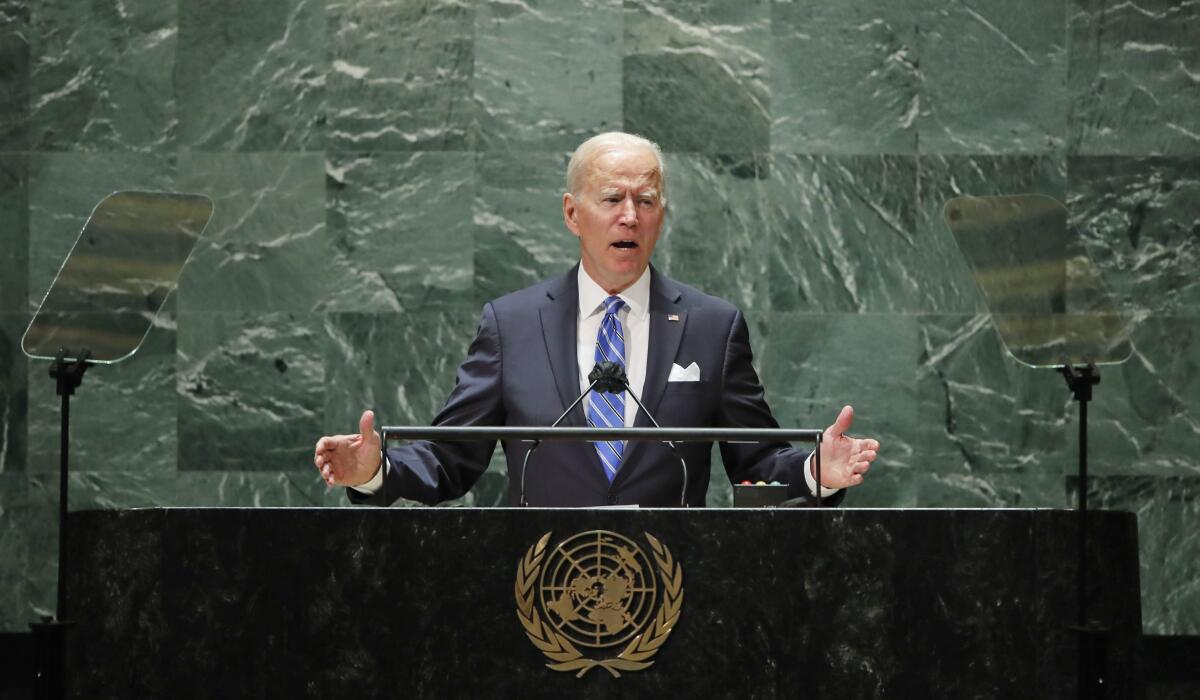
China says it will stop financing the construction of new coal plants around the world, which is a huge deal from an emissions standpoint. The announcement came as President Biden pledged to double the amount of money the U.S. sends to developing countries to help them adapt to climate change, although it’s unclear if Congress will approve those funds, The Times’ Chris Megerian and Tracy Wilkinson report. This all came a few days after Biden held private talks with world leaders, urging them to commit to deep cuts in methane pollution ahead of the Glasgow climate summit in November, Anna M. Phillips reports.
Sen. Joe Manchin wants to “protect and extend the use of coal and natural gas” as he crafts national climate policy. That’s according to this story by the New York Times’ Coral Davenport, who notes that the West Virginia Democrat is still raking in large amounts of personal wealth from coal production. In related news, the Biden administration is writing the first-ever workplace safety rule to protect against heat stress, Zack Colman reports for Politico. It seems the need for such a rule will only grow.
The Bureau of Land Management will move its headquarters back to Washington, D.C., after the Trump administration’s much-debated relocation to Colorado. Interior Secretary Deb Haaland offered a compromise, saying the agency’s Grand Junction office “will grow and expand as the bureau’s official Western headquarters,” per Lisa Friedman at the New York Times. Elsewhere on the Western landscape, two senators — Utah Republican Mitt Romney and Colorado Democrat Michael Bennet — rafted down the Colorado River together and talked drought and climate change, Kyle Dunphey reports for the Deseret News.
THE ENERGY TRANSITION
Los Angeles County took the first step toward ending oil extraction in unincorporated areas, including Inglewood Oil Field. Environmental justice activists celebrated the unanimous vote by the county supervisors, my colleague Jaclyn Cosgrove reports, saying it would protect low-income families and communities of color from the health impacts of living near extraction sites. The California Independent Petroleum Assn. pushed back, saying the move would only lead to more oil imports from overseas.
Speaking of the California Independent Petroleum Assn., you may recall my mentioning a few weeks ago that it had filed for bankruptcy. L.A. Times columnist Michael Hiltzik has since weighed in, arguing that the trade group is a bully that got what it deserved after suing Los Angeles over stricter environmental rules and being ordered to pay $2.3 million in anti-SLAPP penalties.
San Diego is looking for a private company to help build its proposed $1.5-billion pumped storage hydropower project, which would utilize the existing San Vicente Reservoir. Here’s the story from Rob Nikolewski at the San Diego Union-Tribune. If the project actually gets built, it could help California integrate a bunch more solar and wind power into its electricity supply.
ONE MORE THING
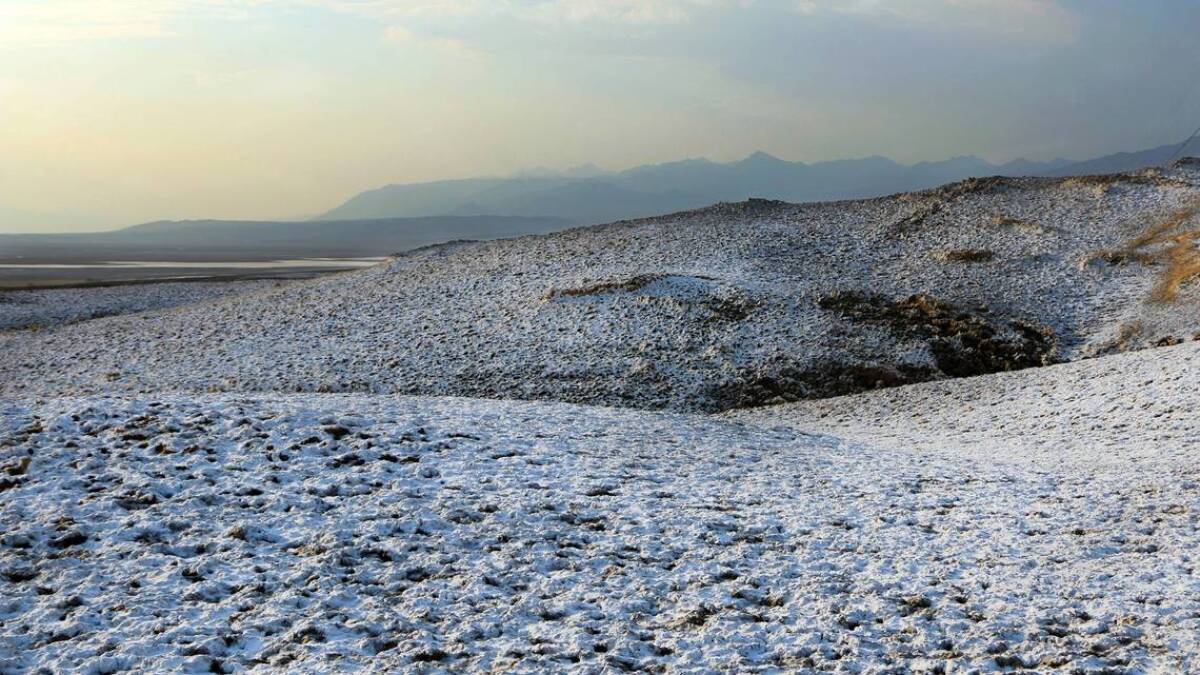
I was already convinced Death Valley National Park is one of the coolest places in the world. Now I feel that even more strongly.
See the above photo? It may look like snow, but it’s actually a phenomenon known as salt flowers, Hayley Smith reports. It forms when rainwater soaks into the soil and dissolves salts beneath the ground, then evaporates, pulling the salts to the surface.
Salt flowers in Death Valley, folks. See you next week.
If you enjoyed this newsletter, please consider forwarding it to your friends and colleagues.




